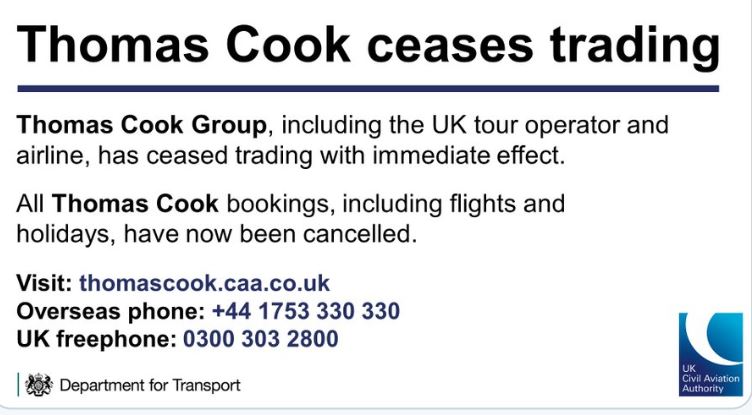 According to Javelin’s 2020 Identify Fraud Study, Americans lost $16.9 billion due to identity fraud. Concerned? Consumer research conducted by Chubb reveals that while the majority of Americans are concerned about being impacted by a cyber breach, only a small percentage are actually taking the right steps to protect themselves and their families. What are the right steps?
According to Javelin’s 2020 Identify Fraud Study, Americans lost $16.9 billion due to identity fraud. Concerned? Consumer research conducted by Chubb reveals that while the majority of Americans are concerned about being impacted by a cyber breach, only a small percentage are actually taking the right steps to protect themselves and their families. What are the right steps?
FIRST: gaining access to quality protection from personal cyber risks should no longer be viewed as a “nice to have” form of asset protection. Meanwhile, many well-known insurance carriers provide scant protection for the wide range of cyber risks that exist. Fortunately, a select group of insurance carriers provide enhanced cyber protection solutions that meet the broader security needs of financially successful individuals and families. Following is a summary of some of the solutions that are available through insurance carriers that offer premier protection programs.
Chubb
Chubb’s Masterpiece Cyber Protection policy includes these key benefits:
- Complimentary access to specialists who can help you resolve identity theft.
- If a fraud occurs, our partner vendor will monitor public records databases to make sure you stay protected.
- Discounted access to a security firm providing one-on-one assistance to securing your networks.
- Coverage to replace or repair your impacted electronic data property or content.
- Coverage for allegations of unintentional online libel, slander, and invasion of privacy.
- Cyber Extortion Coverage, which protects against cyberattacks, threats to release personal information, cause failure to personal computer network, or restricted access to personal data, up to a $25,000 limit.
- Cyber Financial Loss Coverage for stolen account funds, fraudulent charges, lost salary while resolving your claim, and attorney fees, up to a $250,000 limit.
- Cyber Personal Protection, including cyberbullying, cyber breach of privacy, and cyber disruption, up to a $250,000 limit.
To avoid a cyber breach, I encourage all insurance consumers to examine and implement these valuable insights from Chubb: “6 Ways to Protect Yourself From Hackers”
AIG
Family CyberEdge from AIG Private Client Group helps policyholders stay ahead of potential online threats while facilitating recovery should a covered loss arise. Coverage can be customized, and highlights include:
- Data restoration: You can be reimbursed for costs incurred from data restoration expenses after a cyber attack on you or your family’s personal computer system, including wireless and mobile devices.
- Cyber extortion: This coverage reimburses money paid by you or a family member to terminate a cyber extortion threat against you or a family member. It also provides access to an expert cyber consultant to assist if a criminal demands ransom in exchange for your data.
- Crisis management and reputation restoration: If cyber extortion or a similar cyber attack affects your reputation or that of a family member, we can reimburse the cost of hiring a professional crisis management firm.
- Cyberbullying expenses: If you or a family member is a victim of cyberbullying, we can cover the cost of related professional service expenses tied to managing and/or recovering from the incidents.
- Identity monitoring: Coverage includes monitoring services for up to two family members per household, provided by identity monitoring service provider CyberScout. You don’t have to have a claim to benefit from this added layer of protection.
- Cyber Assistance Services: Stay ahead of sophisticated, quickly evolving threats by taking advantage of supplemental services offered by best-in-class cyber security specialists. Expert advice is just a call or click away.
Additionally, AIG provides policyholders access to two cyber security specialists:
CyberScout — policyholders in the U.S. are eligible to access a menu of complimentary identity theft protection services.
K2 Intelligence — For those whose cyber concerns go beyond basic identity protection, K2 Intelligence offers additional services at reduced rates for AIG policyholders.
Berkley One
Berkley One offers a cyber endorsement to their homeowners policy to cover certain expenses related to online extortion, social engineering, cyber bullying, identity theft, system compromise and internet clean-up. Coverage applies on an account basis with limit options between $15,000 and $100,000. A $250 deductible applies.
Additionally, Berkley One distinguishes itself by providing LifeStages® Resources, helping consumers learn how to minimize risk and protect personal information. From direct one-to-one support with fraud specialists to written documentation and assessment tools, LifeStages offers consumers valuable resources to combat identity thieves. Check out these two valuable resources:
Ask the Expert Knowledge Center: Become more informed and educated on the topic of identity theft and privacy-related concerns with educational content that includes news articles, best practices, tip sheets, videos and more.
ID RiskCompass: This interactive assessment tool gauges your risk propensity based on responses to a series of questions. Each response is accompanied by privacy tips and best practices for securing personal information.
PURE Insurance
PURE Insurance, a member of the Tokio Marine Group, offers PURE Starling as an optional endorsement that members can add to a homeowners policy. It provides coverage for losses caused by fraud and cyber crime, while also providing access to recovery resources after a covered loss.
In Conclusion
Sutton’s Law asserts that when diagnosing a problem, one should first consider the obvious. It is named after the bank robber Willie Sutton, who replied to a reporter’s inquiry as to why he robbed banks by responding “because that’s where the money is.” For the same reason, cyber criminals are increasingly targeting and gaining access to the assets of financially successful individuals and families. Fortunately, the insurance carriers focused on meeting the protection needs of that segment offer high-quality personal cyber protection solutions.
If the above solutions are of interest, I can provide introductions to independent insurance specialists who can provide access to comprehensive protection solutions from each of the referenced carriers.

 One of the world’s oldest tour companies, Thomas Cook, abruptly announced it was going out of business yesterday. While not quite “fake news”, the advice provided by a travel expert on NBC Evening News during their report on this story can best be characterized as “glib news”.
One of the world’s oldest tour companies, Thomas Cook, abruptly announced it was going out of business yesterday. While not quite “fake news”, the advice provided by a travel expert on NBC Evening News during their report on this story can best be characterized as “glib news”. Probably because I was in New York City on Sept 12, 2001 and not the day before , my most vivid memories of the terror attacks of 9/11/2001 are actually the result of my experiences the following day. This is not just my convenient memory; my recollections are indelible and many.
Probably because I was in New York City on Sept 12, 2001 and not the day before , my most vivid memories of the terror attacks of 9/11/2001 are actually the result of my experiences the following day. This is not just my convenient memory; my recollections are indelible and many. Many financially successful individuals and families I meet with become uncomfortable whenever I address this topic. Such discomfort likely stems from the recognition that time and convenience has caused lapses in adhering to the best practices they have agreed will enhance their security. Though I don’t want to be a fear monger, I remind the clients I serve that bad things can and do happen to good people who drop their guard. Knowing how to safeguard your private information is not valuable unless you consistently take the necessary precautions. My team and I work with specialists offering insurance protection from cyber intrusions, and more importantly a range of services to enhance your personal privacy.
Many financially successful individuals and families I meet with become uncomfortable whenever I address this topic. Such discomfort likely stems from the recognition that time and convenience has caused lapses in adhering to the best practices they have agreed will enhance their security. Though I don’t want to be a fear monger, I remind the clients I serve that bad things can and do happen to good people who drop their guard. Knowing how to safeguard your private information is not valuable unless you consistently take the necessary precautions. My team and I work with specialists offering insurance protection from cyber intrusions, and more importantly a range of services to enhance your personal privacy. If Mother Nature was trying to send us a message in 2017, it reminds me of the adage “When Momma ain’t happy, ain’t nobody happy”. Mountains ravaged by wildfires
If Mother Nature was trying to send us a message in 2017, it reminds me of the adage “When Momma ain’t happy, ain’t nobody happy”. Mountains ravaged by wildfires  Not knowing the right questions to ask about your insurance protection is among the key reasons far too many consumers hear the dreaded words “you’re not covered” at the worse possible time — after a personal property or liability insurance loss.
Not knowing the right questions to ask about your insurance protection is among the key reasons far too many consumers hear the dreaded words “you’re not covered” at the worse possible time — after a personal property or liability insurance loss.

 The rising cost of auto insurance is a source of frustration for most of us. Many I speak with want to know how insurance companies determine the premiums they charge, and why those costs are rising.
The rising cost of auto insurance is a source of frustration for most of us. Many I speak with want to know how insurance companies determine the premiums they charge, and why those costs are rising.